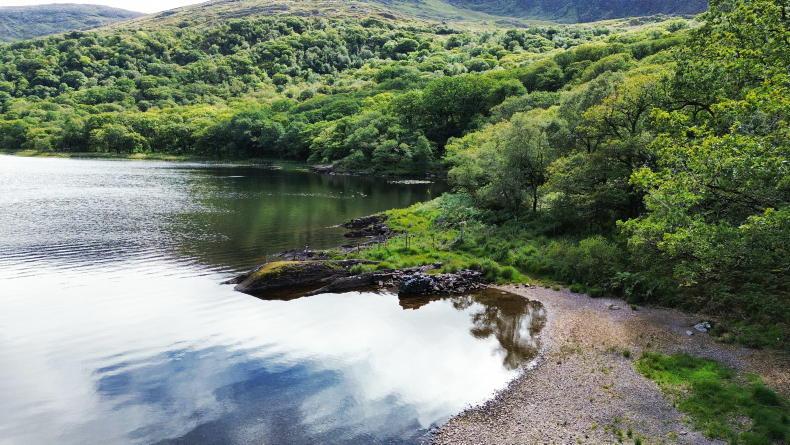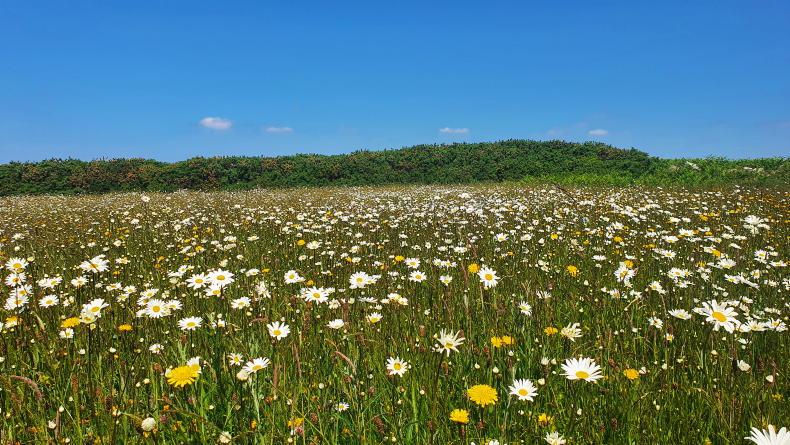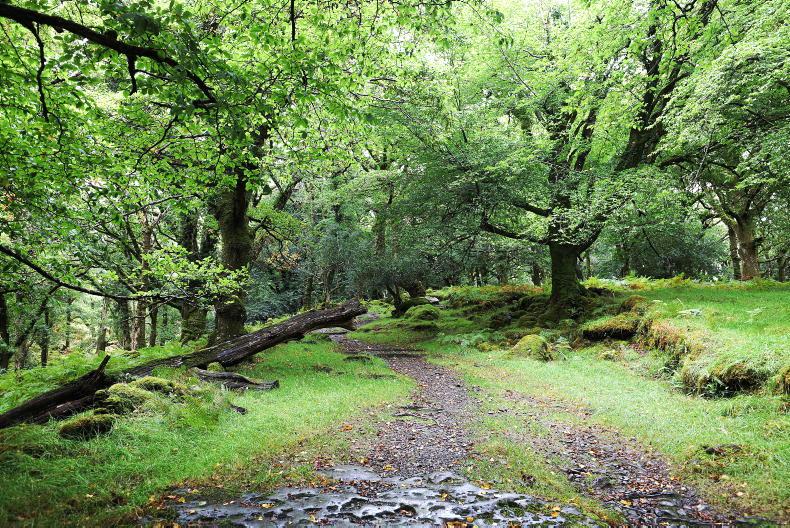A full national inventory of Ireland’s ancient and long-established woodland is required, a report by the National Parks and Wildlife Service (NPWS) has said.
Despite their ecological, historical and cultural significance, the NPWS report warned that these undesignated woodlands are at risk of degradation and even deforestation.
There are over 19,000ha of these woodlands in Ireland, which contain old sessile oak, bog woodland, alluvial woodland (located in floodplains) and yew woodland.
“A formalised approach for the protection, monitoring and restoration of [these woodlands] in Ireland is required.
“Based on the results of a case study in Leitrim and Kilkenny, the majority of [these woodlands] in Ireland are not recorded in the provisional inventory of ancient and long-established woodland.
“A full national inventory of ancient and long-established woodland in Ireland is required. The inventory should be designed to allow for periodic updates based on best available information,” the report said.
Rare feature
Ireland’s ancient woodlands and long-established woodlands are now a “rare and fragmented feature” of the Irish landscape, the report found.
The provisional inventory of ancient and long-established woodland in Ireland used historic map and text sources in combination with other contextual evidence to assign ancient or possible ancient status to 123 woodland sites across Ireland.
However, the report found that this provisional inventory focused primarily on relatively large woodlands which were over 5ha in size.
“Given the small and fragmentary nature of Irish woodlands, it is likely that many ancient and long-established woodlands are not included in the provisional inventory,” it noted.
Review
A review of the provisional inventory of these woodlands revealed that only 32% of the area of mapped occurs within the current network of protected areas.
“Conservation assessment information for 75 [of these woodland] sites listed in the provisional inventory is available through Habitats Directive Article 17 monitoring data for Annex I habitats,” the report states.

Sessile oak.
Of this number, 46% of these wooded sites received an unfavourable-bad conservation assessment. The report found that the most common negative impacts on the conservation status of these woodlands come from invasive non-native species and overgrazing.
Non-native conifers
As part of the report, the NPWS completed a case study of 1830s woodland cover in Co Leitrim and Co Kilkenny.
To identify and map historic woodland cover at a finer scale than the provisional inventory, all woodlands greater than 0.1ha in Ordnance Survey first-edition maps were digitised in a database.
“Based on first-edition maps, forests covered 1.3% (2,077ha) of Leitrim in c1830, compared to 20.1% today. Some 1,102ha (53%) of c1830s woodland in Leitrim remains wooded today.
“In Kilkenny, 3.8% (7,860ha) of the area of the county was wooded compared with a current forest cover of 10%. Only 44% (3,487ha) of the wooded area in c1830s remains wooded today.
"Despite the widespread loss of old woodlands, the overall forest area in Leitrim and Kilkenny has dramatically expanded since the c1830s largely due to establishment of non-native conifer plantations,” it stated.
As part of the case study, Down Survey maps (1656-1658) and other 17th and 18th century sources were used to assign ancient status to extant 1830s woodlands greater than 0.25ha in size.
In Leitrim and Kilkenny, 120 and 145 ancient or possible ancient woodland polygons were identified, a total of 270ha and 877ha respectively.
A full national inventory of Ireland’s ancient and long-established woodland is required, a report by the National Parks and Wildlife Service (NPWS) has said.
Despite their ecological, historical and cultural significance, the NPWS report warned that these undesignated woodlands are at risk of degradation and even deforestation.
There are over 19,000ha of these woodlands in Ireland, which contain old sessile oak, bog woodland, alluvial woodland (located in floodplains) and yew woodland.
“A formalised approach for the protection, monitoring and restoration of [these woodlands] in Ireland is required.
“Based on the results of a case study in Leitrim and Kilkenny, the majority of [these woodlands] in Ireland are not recorded in the provisional inventory of ancient and long-established woodland.
“A full national inventory of ancient and long-established woodland in Ireland is required. The inventory should be designed to allow for periodic updates based on best available information,” the report said.
Rare feature
Ireland’s ancient woodlands and long-established woodlands are now a “rare and fragmented feature” of the Irish landscape, the report found.
The provisional inventory of ancient and long-established woodland in Ireland used historic map and text sources in combination with other contextual evidence to assign ancient or possible ancient status to 123 woodland sites across Ireland.
However, the report found that this provisional inventory focused primarily on relatively large woodlands which were over 5ha in size.
“Given the small and fragmentary nature of Irish woodlands, it is likely that many ancient and long-established woodlands are not included in the provisional inventory,” it noted.
Review
A review of the provisional inventory of these woodlands revealed that only 32% of the area of mapped occurs within the current network of protected areas.
“Conservation assessment information for 75 [of these woodland] sites listed in the provisional inventory is available through Habitats Directive Article 17 monitoring data for Annex I habitats,” the report states.

Sessile oak.
Of this number, 46% of these wooded sites received an unfavourable-bad conservation assessment. The report found that the most common negative impacts on the conservation status of these woodlands come from invasive non-native species and overgrazing.
Non-native conifers
As part of the report, the NPWS completed a case study of 1830s woodland cover in Co Leitrim and Co Kilkenny.
To identify and map historic woodland cover at a finer scale than the provisional inventory, all woodlands greater than 0.1ha in Ordnance Survey first-edition maps were digitised in a database.
“Based on first-edition maps, forests covered 1.3% (2,077ha) of Leitrim in c1830, compared to 20.1% today. Some 1,102ha (53%) of c1830s woodland in Leitrim remains wooded today.
“In Kilkenny, 3.8% (7,860ha) of the area of the county was wooded compared with a current forest cover of 10%. Only 44% (3,487ha) of the wooded area in c1830s remains wooded today.
"Despite the widespread loss of old woodlands, the overall forest area in Leitrim and Kilkenny has dramatically expanded since the c1830s largely due to establishment of non-native conifer plantations,” it stated.
As part of the case study, Down Survey maps (1656-1658) and other 17th and 18th century sources were used to assign ancient status to extant 1830s woodlands greater than 0.25ha in size.
In Leitrim and Kilkenny, 120 and 145 ancient or possible ancient woodland polygons were identified, a total of 270ha and 877ha respectively.











SHARING OPTIONS